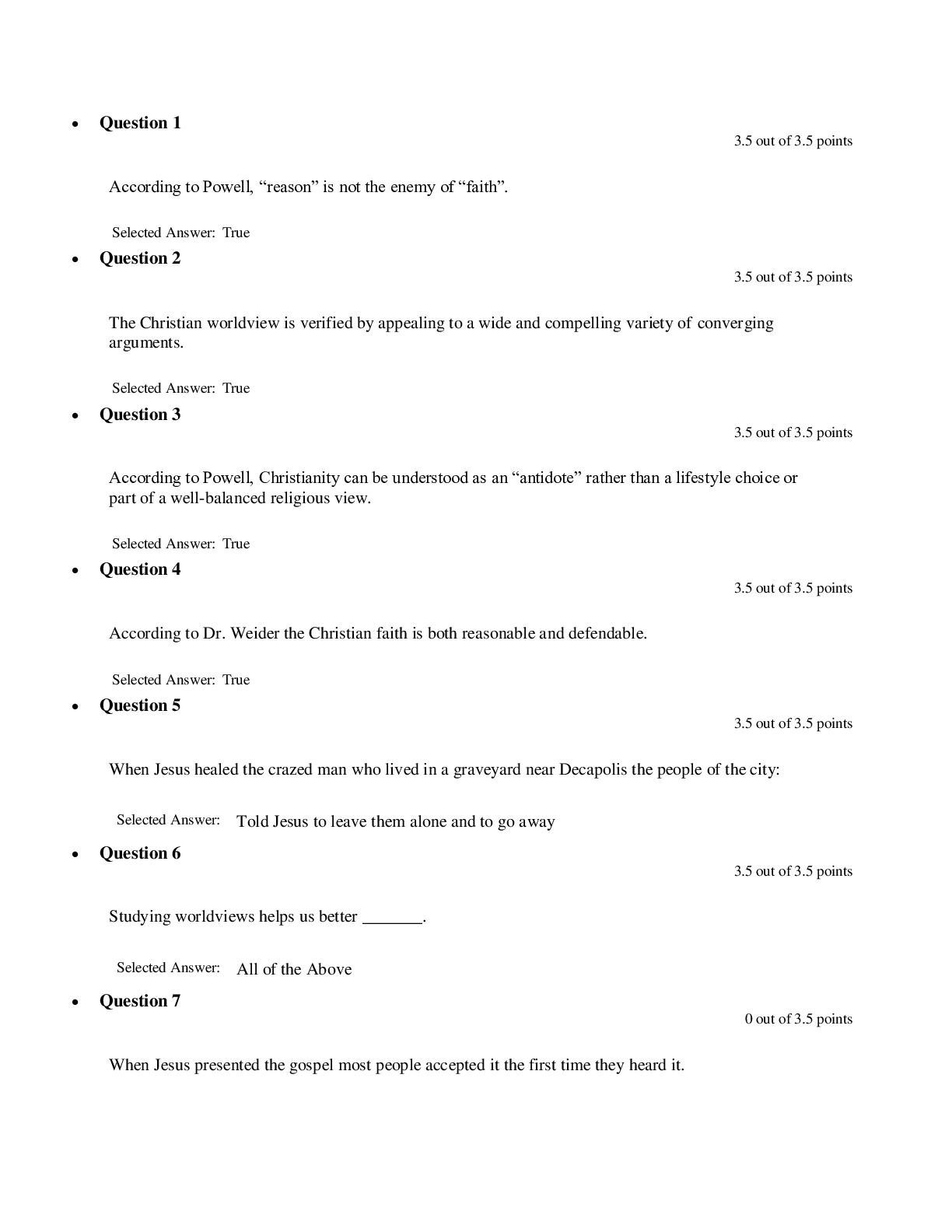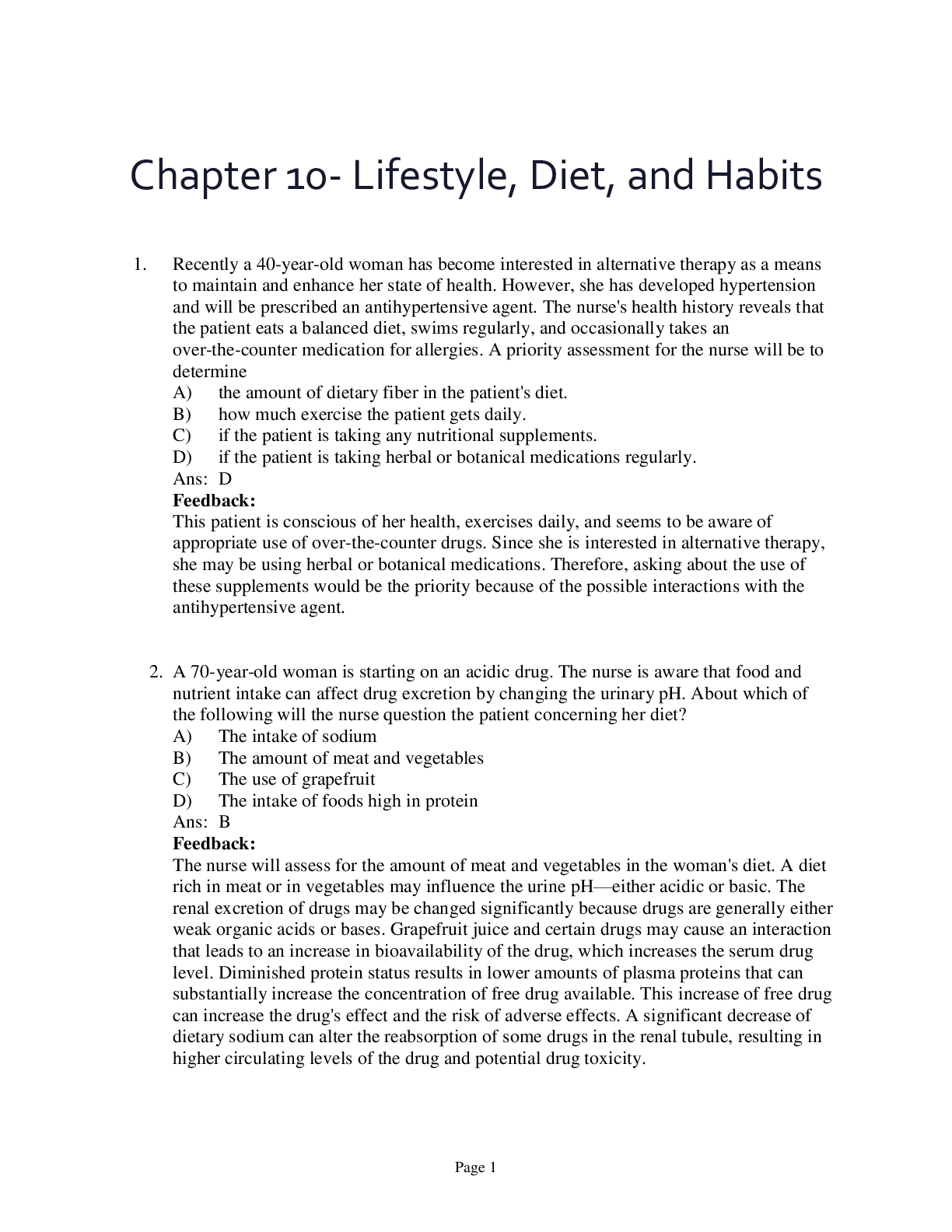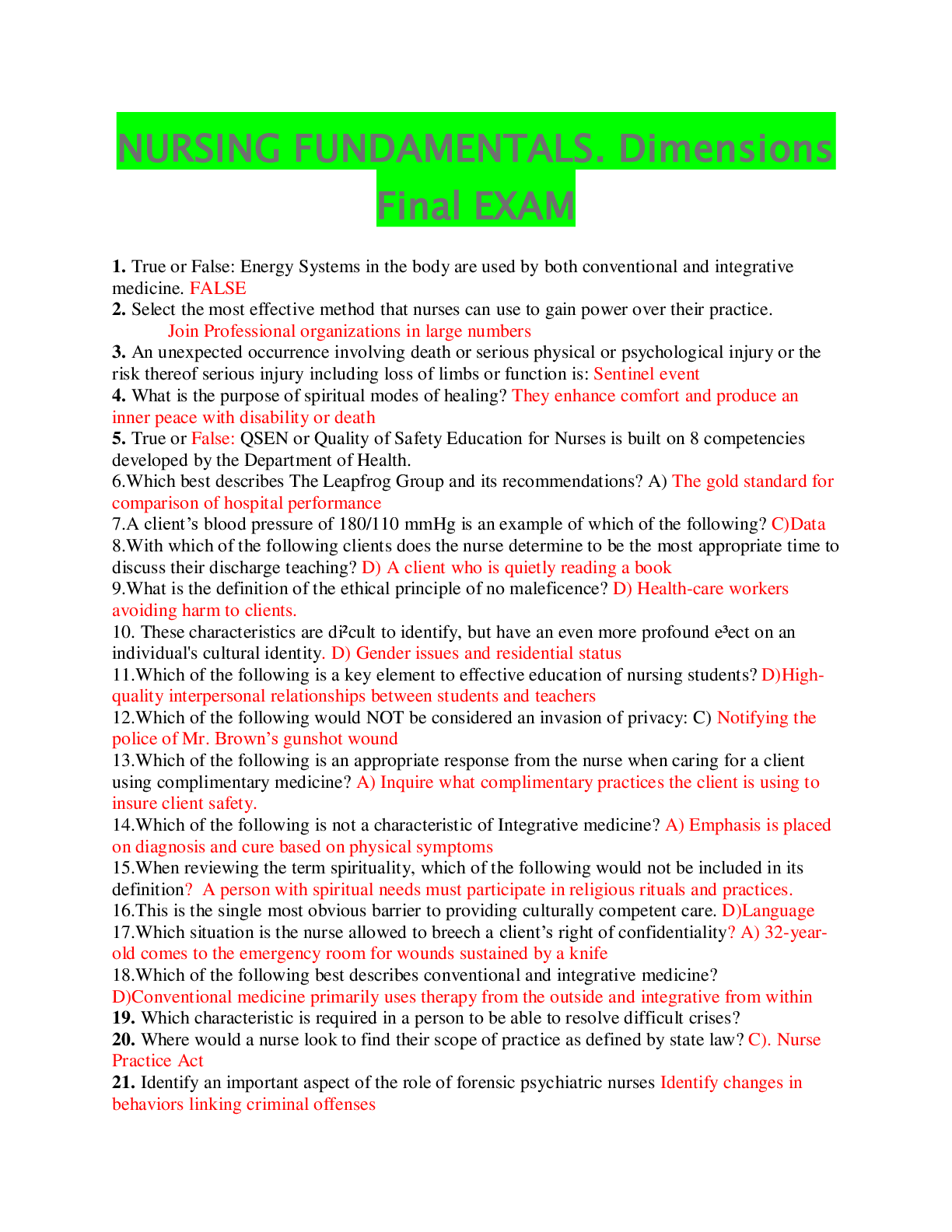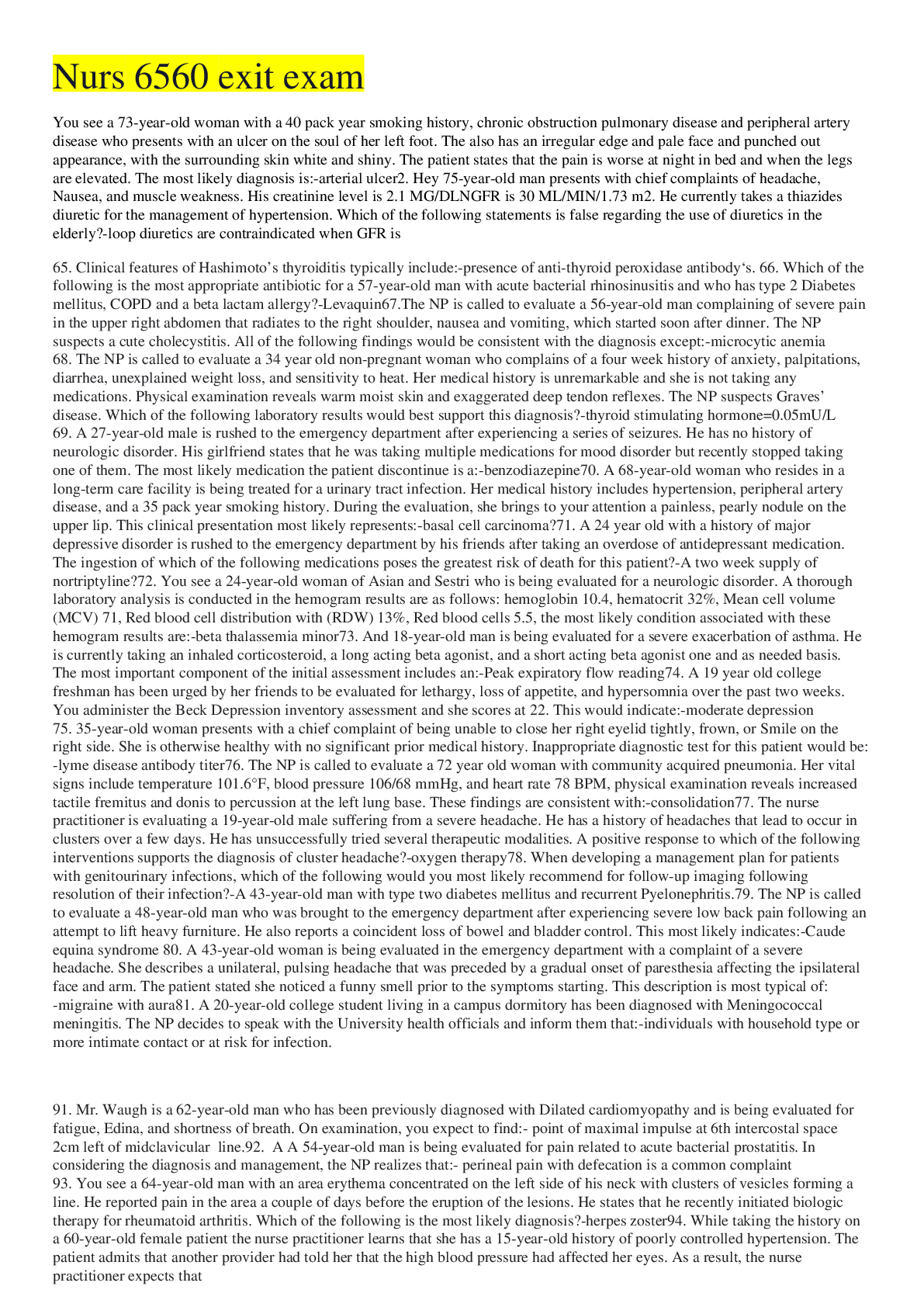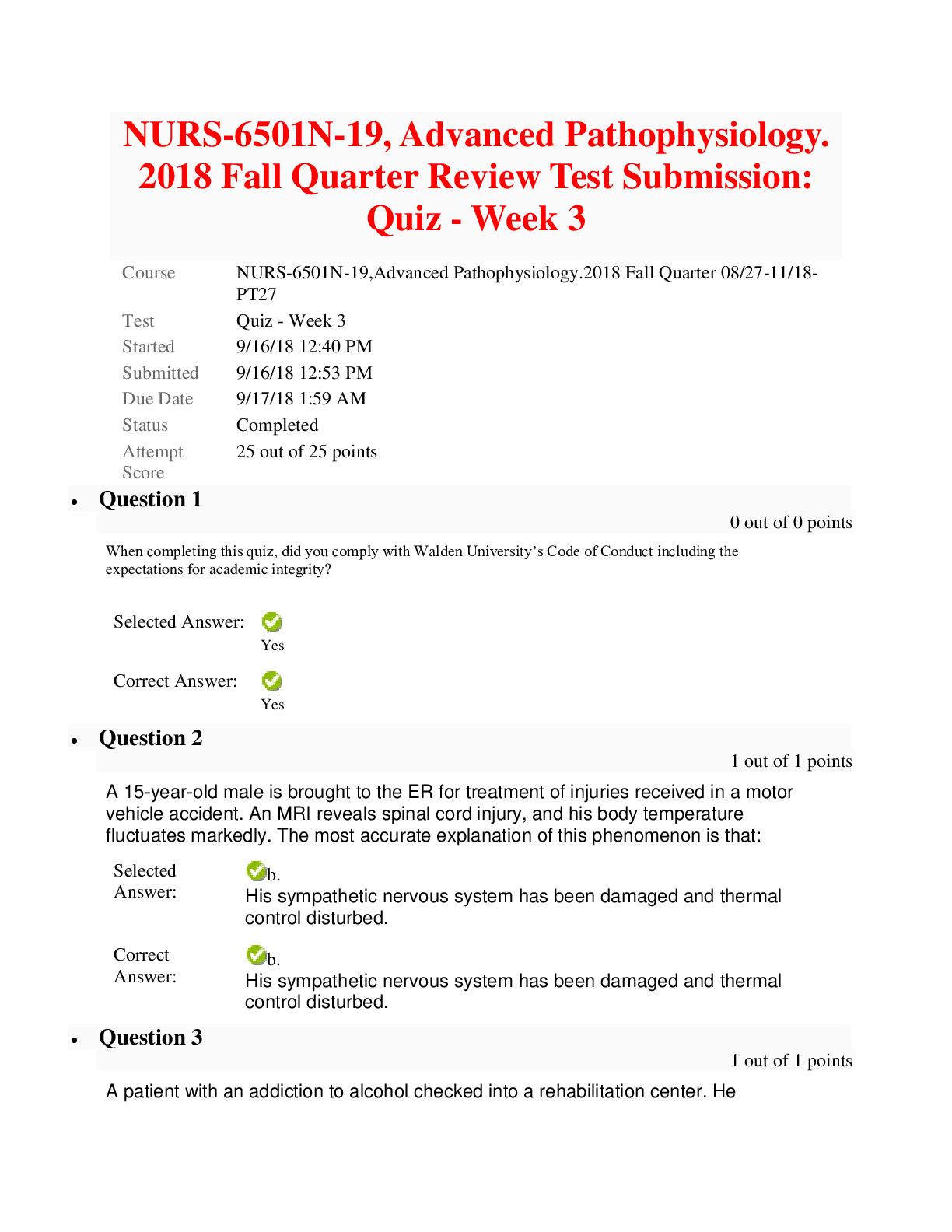*NURSING > QUESTIONS & ANSWERS > FPC / CFRN - Review Exam - Version B with complete solutions (LATEST 2022) 137 Questions with 100% C (All)
FPC / CFRN - Review Exam - Version B with complete solutions (LATEST 2022) 137 Questions with 100% Correct Answers
Document Content and Description Below
FPC / CFRN - Review Exam - Version B with complete solutions (LATEST 2022) 137 Questions with 100% Correct Answers Myxedema coma is also known as... A. Thyroid storm B. Adrenal insufficiency C. H... ypothyroidism D. Hyperaldosteronism - ✔✔Hypothyroidism Most common presentation of a patient with hypothyroidism are all of the following, Except... A. Cold intolerance with coarse hair B. Almost exclusively over the age of sixty C. >90% of cases occur in the winter D. Primarily in men - ✔✔Primarily in men Hypothroidism occurs primarily in women, almost exclusively over the age of sixty, with 90% of the cases occurring in the winter months. Your patient presents with following parameters: CVP 0, CI 1, PA S/D 8/4, wedge 3, and SVR 1,800. What is your diagnosis? A. Hypovolemic shock B. Right ventricular infarction C. CHF D. Sepsis - ✔✔Hypovolemic shock Careful interpretation of the CVP is important! Central venous pressure (CVP) describes the pressure of blood in the thoracic vena cava, near the right atrium of the heart. CVP reflects the amount of blood returning to the heart and the ability of the heart to pump the blood into the arterial system. Drug of choice for profound hypotension in septic shock is? A. Isotonic crystalloid solution B. Levophed C. Nipride D. Dobutamine - ✔✔Levophed Sepsis is by far the most common cause of distributive shock. The average normal ICP range is... A. 0-10 mmHg B. 10-20 mmHg C. 20-30 mmHg D. >30 mmHg - ✔✔Normal ICP range is 0-10 mmHg, but range can go as high as 15 mmHg. The formula to calculate MAP is A. 2/3 DBP × SBP B. 2 × DBP + SBP divided by 3 C. 2 × SBP + DBP D. 2 + DBP × SBP divided by 3 - ✔✔2 × DBP + SBP / 3 (normal 80-100 mmHg) Normal coronary perfusion pressure (CPP) is A. 50-60 mmHg B. 70-90 mmHg C. 80-100 mmHg D. <50 mmHg - ✔✔Normal 50-60 mmHg Coronary perfusion pressure: (CPP) = DBP-PAWP The patient presents with the following hemodynamic parameters: CVP 1, CI 1.7, PA S/D 12/6, wedge 6, and SVR 300. Vital signs are 78/40, HR 60, RR 16, SaO2 98%. The most likely cause is... A. RVMI B. Neurogenic shock C. Septic shock D. Hypovolemic shock - ✔✔Neurogenic shock SVR < 800, think distributive shock. Next look at the CI; is it less than 2.5? Hypotension and either a normal heart and/or bradycardia present narrows the type of distributive shock as being neurogenic shock. Severe hypothermic Pt's are at highest risk for wh [Show More]
Last updated: 1 year ago
Preview 1 out of 47 pages
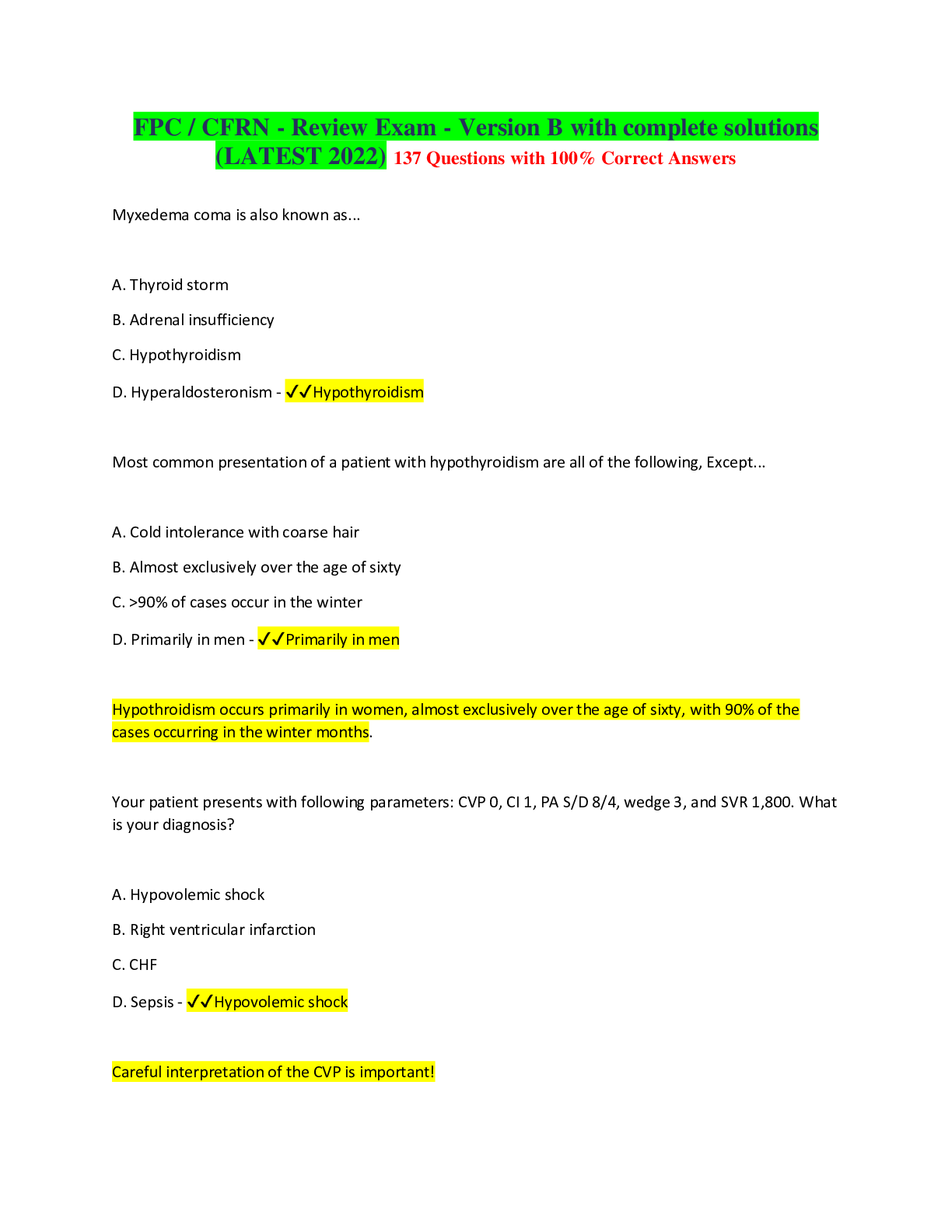
Buy this document to get the full access instantly
Instant Download Access after purchase
Add to cartInstant download
We Accept:

Reviews( 0 )
$10.50
Document information
Connected school, study & course
About the document
Uploaded On
May 22, 2022
Number of pages
47
Written in
Additional information
This document has been written for:
Uploaded
May 22, 2022
Downloads
0
Views
66

.png)
.png)
.png)
.png)
.png)
.png)
.png)
.png)
.png)
.png)
.png)





